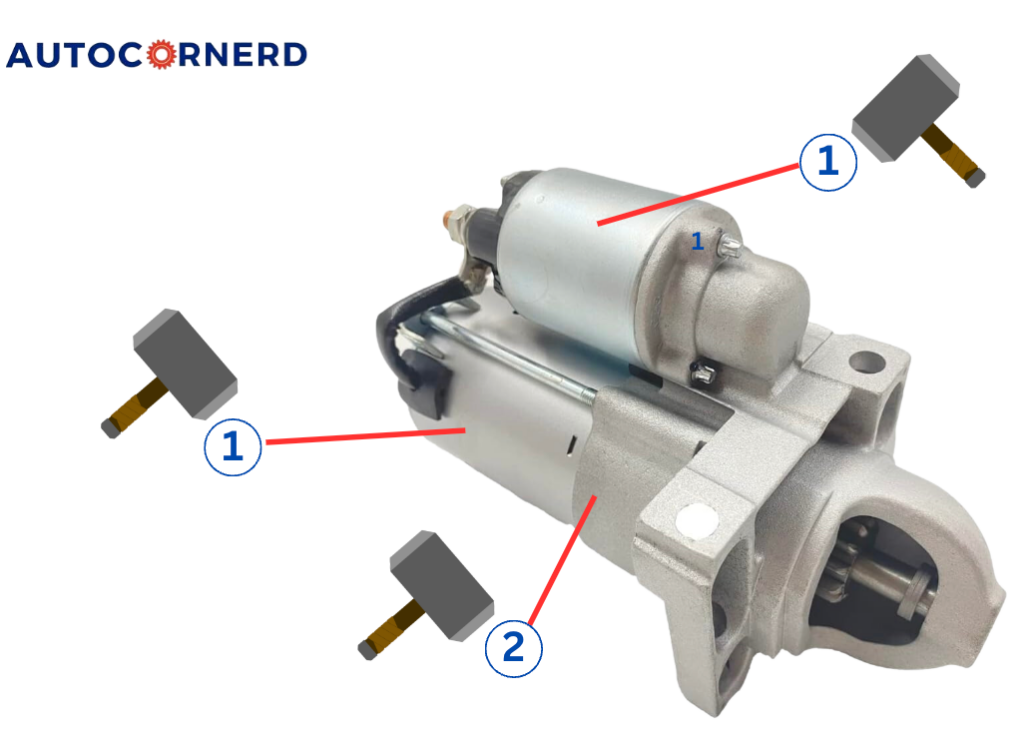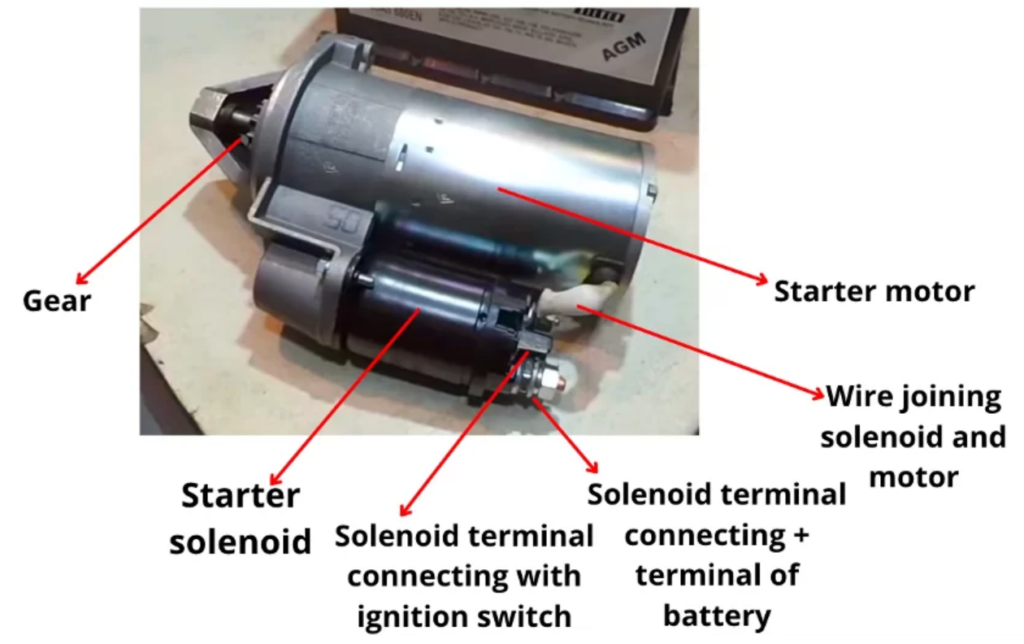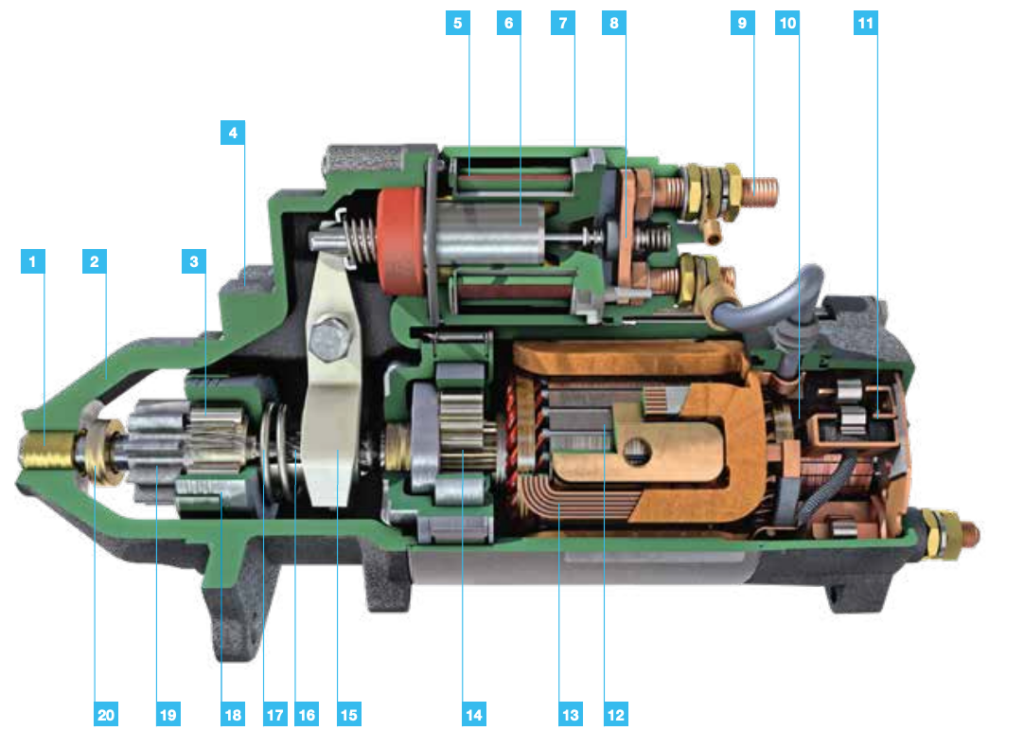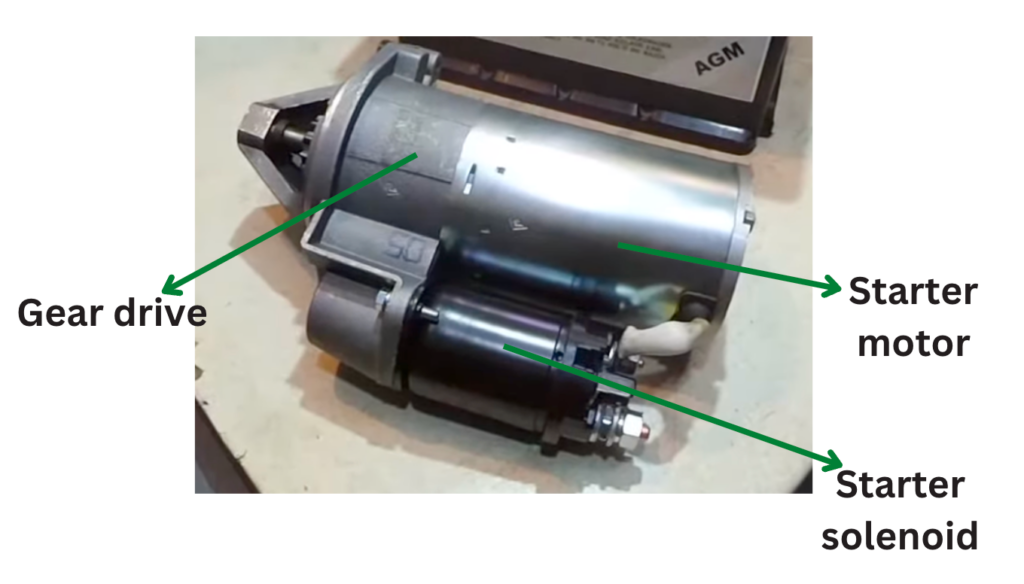Where To Hit Starter With Hammer? [Full Guide]
Gently tap the starter solenoid or motor body with a hammer to dislodge a stuck solenoid, allowing current to flow to the starter motor. Tapping moves the starter motor armature past a dead spot, enabling contact. With someone turning the ignition on and off, keep tapping the solenoid or motor while starting the engine. Avoid hitting forcefully, which can damage coils, magnets and brushes. This trick works if the solenoid alone is stuck.

If your car won’t start, you might need to tap the starter to get it going. Be very careful where you hit it. Hitting the wrong place can make things worse. This guide shows the right way to tap the starter. If done carefully, this can help start your car.
Rapid clicking when you turn the key means there are bad connections stopping the starter from working right. This could be in the battery, ground wires or starter itself.
If you hear a single, loud click coming from the starter, it means that a starter solenoid is trying to engage but it is stuck. In that case, you should slightly hit the starter solenoid with a hammer. To learn more, you can read my guide on car starts sometimes and sometimes it doesn’t.
How Does A Starter Work?

A starter helps a car’s engine to start up. It sits on the side of the engine near the flywheel. You can find the starter on the driver’s side of the engine, close to the flywheel.
The starter has a small electric motor inside that turns the engine over to “crank” it. When you turn the key or push the button, the starter gear pops out. This gear locks into the engine’s flywheel.
Now the starter can spin the flywheel. Spinning the flywheel gets the engine moving. After the engine starts, it makes its own power. Then the starter gear pulls back in.
A starter has these main parts:
- Starter solenoid – This part helps the electric current flow to the starter motor.
- Electric starter motor – The actual motor that spins the engine.
The internal view of a starter is shown in the illustration below:

- Location of pinion shaft
- Flange
- Rolling element of freewheel clutch
- Mounting flange
- Solenoid coil
- Plunger
- Solenoid
- Contact bridge
- Battery connection
- Commutator
- Carbon brush
- Armature
- Pole winding
- Reduction gear
- Engaging fork
- Helix
- Meshing spring
- Freewheel clutch
- Pinion
- Stop ring
Starter Solenoid
The starter solenoid has windings and a plunger. The winding gets magnetized when a current flows through it. The plunger inside a starter solenoid moves due to a magnetic force acting on it. That plunger acts as an actuator to move a pinion gear in front of the flywheel and close the contact bridge to transfer current to the starter motor.
The starter solenoid performs the following functions:
- Pulling the pinion to engage the flywheel
- Holding the pinion engaged with the flywheel during starting rotation
- Completing the electrical circuit from the battery to the starter’s brushes
- Causing the pinion to retract from the flywheel.
The starter solenoid has three terminals:
- First terminal gets a constant 12V supply from the battery.
- Second terminal connects with the ignition switch that feeds current to the solenoid when the key is turned on. It is also called S terminal.
- Third terminal supplies current from the first terminal to the starter motor terminal when the plunger inside a starter solenoid makes a contact bridge.
Electric Starter Motor
The starter motor provides the initial mechanical energy to the pinion so it can rotate. This, in turn, transfers its energy to the flywheel to start the engine. The electric motor section of the starter motor consists of the armature, carbon brushes, permanent magnets, electromagnetic coils, armature shaft, etc.

Gear Drive
Next to the starter motor is a gear drive section. The gear drive section has a reduction gear drive and a pinion gear at the end. Reduction gear drive reduces the speed of the shaft and the pinion gear meshes with the flywheel.
If you need a video demonstration of the working of a starter, I found the following Youtube video helpful:
Why Does Hitting A Starter Make It Work?
Tapping or gently hitting a starter with a hammer can:
- Give enough of a jolt to the brushes to make a contact with a commutator
- Dislodge a stuck starter solenoid
- Push armature to a new position where it can make a good electrical contact
Hitting a starter with a hammer can dislodge a plunger of a starter solenoid that has been stuck due to the accumulation of dirt and grit around the plunger ends.
So, if the plunger inside the starter solenoid is stuck in the “in” position, it will prevent the pinion gear from moving out and engaging with the flywheel when the ignition switch is turned to the “on” position.
Moreover, there are brushes in the starter motor that are made of either carbon or copper. They also wear out or rust develops on them, due to which they do not have a perfect electrical contact to transfer the electric current.
These brushes in the starter can also become stuck, due to which they can’t move when the armature rotates. So, these electrical contacts are jarred enough to get the circuit to complete which will cause the starter motor not to turn.
So, by hitting the starter motor area, the carbon brushes are moved back into place so they can make contact one more time with the commutator and allow electricity to flow.
Moreover, the copper contacts, which connect the positive cable to the starter winding, burn and leave a black residue that prevents the contacts from working properly. You can try cleaning the contacts with a wire brush until they are shiny and bright.
Another important point in a starter is a copper washer that is pushed into the two large contacts when a plunger is sucked into the starter solenoid under the action of a magnetic field. The contact of the copper washer allows electric current to flow to the starter motor.
If the contacts or copper washer have bad spots, hitting the starter with a hammer can move the copper washer slightly where good electrical contact can be made and electric current can be transferred to the starter motor.
To hit the starter, I’ll suggest you a pry-bar or rubber mallet.
Important Locations Where You Can Tap or Hit The Starter
There are following important spots on a starter where you can hit a hammer gently to try to start your vehicle:
- Starter solenoid
- Starter motor
- Gear drive

Someone should hold the key in the start position while you gently hit the starter.
The reason for tapping the starter is that the teeth on the front of the pinion gear can wear down over time. When the teeth are worn, they can’t properly mesh with the flywheel. By gently hitting the starter, the pinion gear moves slightly so less-worn teeth can match up with the flywheel.
How To Test A Bad Starter?
The wires first need checking before removing the starter from your car. Use a voltmeter first across the good battery’s positive side and the S terminal of the starter. Less than 0.2V should show when trying to start up.
If the voltage drop checks out ok, the next move is testing the starter.
To test, the starter must come out. In some cars, the starter sits under the engine. In others, open the hood and it’s by the block.
If the solenoid works right, the gear part will come out of the casing to meet up with the flywheel. Also, the starter motor’s gear will spin if working. Sometimes faults sneak into the armature of the starter motor, making the car start and stop.
I found the below video helpful to test the starter motor:
Symptoms Of A Bad Starter
- The starter motor doesn’t engage when you turn the key.
- You hear a clicking noise when you turn the key.
- The starter motor makes grinding noises.
- The starter motor smells burnt.
- The starter motor is very hot to the touch.
How Long Will Tapping The Starter Work?
A car’s starter can sometimes get damaged. When this happens, hitting or tapping the starter might help it work again for a little while. But tapping the starter is usually only a temporary fix.
Inside the starter are small parts called brushes and copper contacts. These parts can break over time. There is also a solenoid, which can get stuck. If any of these parts are too damaged, tapping the starter will only work for a short time before it completely stops working.
Tapping also does not fix the problem that the starter gear cannot properly connect to the flywheel. This will make loud grinding noises. It can further ruin the starter and even damage the engine.
